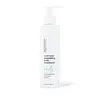What's inside
What's inside
 Key Ingredients
Key Ingredients

 Benefits
Benefits

 Concerns
Concerns

 Ingredients Side-by-side
Ingredients Side-by-side

Water
Skin ConditioningGlycolic Acid
BufferingNiacinamide
SmoothingC12-15 Alkyl Benzoate
AntimicrobialAmmonium Hydroxide
BufferingCetearyl Alcohol
EmollientButylene Glycol
HumectantKojic Acid
AntioxidantNeopentyl Glycol Diheptanoate
EmollientGlyceryl Stearate
EmollientPEG-100 Stearate
Polyacrylamide
Isododecane
EmollientSqualane
EmollientAlpha-Arbutin
AntioxidantAzelaic Acid
BufferingC13-14 Isoparaffin
EmollientCamellia Sinensis Leaf Extract
AntimicrobialCetearyl Glucoside
EmulsifyingDimethicone
EmollientDisodium EDTA
Ethylhexylglycerin
Skin ConditioningGlutathione
Lactic Acid
BufferingLaureth-7
EmulsifyingPentaerythrityl Tetra-Di-T-Butyl Hydroxyhydrocinnamate
AntioxidantPhenoxyethanol
PreservativePropyl Gallate
AntioxidantRetinyl Palmitate
Skin ConditioningTocopheryl Acetate
AntioxidantXanthan Gum
EmulsifyingWater, Glycolic Acid, Niacinamide, C12-15 Alkyl Benzoate, Ammonium Hydroxide, Cetearyl Alcohol, Butylene Glycol, Kojic Acid, Neopentyl Glycol Diheptanoate, Glyceryl Stearate, PEG-100 Stearate, Polyacrylamide, Isododecane, Squalane, Alpha-Arbutin, Azelaic Acid, C13-14 Isoparaffin, Camellia Sinensis Leaf Extract, Cetearyl Glucoside, Dimethicone, Disodium EDTA, Ethylhexylglycerin, Glutathione, Lactic Acid, Laureth-7, Pentaerythrityl Tetra-Di-T-Butyl Hydroxyhydrocinnamate, Phenoxyethanol, Propyl Gallate, Retinyl Palmitate, Tocopheryl Acetate, Xanthan Gum
Water
Skin ConditioningPetrolatum
EmollientGlycolic Acid
BufferingGlycerin
HumectantAmmonium Hydroxide
BufferingStearic Acid
CleansingDimethicone
EmollientParaffinum Liquidum
EmollientCetyl Alcohol
EmollientGlyceryl Stearate
EmollientPEG-100 Stearate
Lanolin Alcohol
EmollientPEG-40 Stearate
EmulsifyingSorbitan Stearate
EmulsifyingPropylene Glycol
HumectantDiazolidinyl Urea
PreservativeIodopropynyl Butylcarbamate
PreservativeIngredients Explained
These ingredients are found in both products.
Ingredients higher up in an ingredient list are typically present in a larger amount.
We don't have a description for Ammonium Hydroxide yet.
Dimethicone is a type of synthetic silicone created from natural materials such as quartz.
What it does:
Dimethicone comes in different viscosities:
Depending on the viscosity, dimethicone has different properties.
Ingredients lists don't always show which type is used, so we recommend reaching out to the brand if you have questions about the viscosity.
This ingredient is unlikely to cause irritation because it does not get absorbed into skin. However, people with silicone allergies should be careful about using this ingredient.
Note: Dimethicone may contribute to pilling. This is because it is not oil or water soluble, so pilling may occur when layered with products. When mixed with heavy oils in a formula, the outcome is also quite greasy.
Learn more about DimethiconeGlyceryl Stearate is a mix of glycerin and stearic acid.
It is used to stabilize the mixing of water and oil ingredients. By preventing these ingredients from separating, it can help elongate shelf life. It can also help thicken the product's texture.
As an emollient, it helps soften skin and supports barrier-replenishing ingredients.
In cosmetics, Glyceryl Stearate is often made from vegetable oils or synthetically produced.
This ingredient may not be fungal-acne safe
Fun fact: The human body also creates Glyceryl Stearate naturally.
Learn more about Glyceryl StearateGlycolic Acid is arguably the most famous alpha hydroxy acid (AHA) with tons of research backing its benefits.
It is found naturally in sugar cane but the form used in skincare is usually synthetic for purity and stability.
Glycolic acid removes the top layer of dead skin cells to allow newer and fresher ones to emerge.
AHAs work by breaking down the structural “glue” that holds old skin cells in place. When that buildup is gone, your skin can renew itself more efficiently.
Research also shows glycolic acid stimulates collagen production, helping to firm and thicken the skin over time. This is one of its biggest advantages over other AHAs.
Overall, glycolic acid helps with:
Fun fact: Glycolic acid boosts skin hydration by helping it produce molecules that increase hyaluronic acid naturally.
To work best, glycolic acid products should have a pH between 3-4 (that’s where exfoliation is most effective but still gentle on skin).
The pH and concentration of a product are key to its effectiveness:
It is normal to feel a slight stinging sensation when using glycolic acid. This usually fades as your skin adjusts.
Because glycolic acid has the smallest molecular size in the AHA family, it can penetrate deeper, which enhances its effectiveness but also makes it more likely to irritate sensitive skin.
If your skin is very sensitive or prone to rosacea, glycolic acid may be too strong; in that case, try milder options like lactic acid or a PHA instead.
Recent studies suggest glycolic acid might even help protect against UV damage. But don’t skip sunscreen! Freshly exfoliated skin is more sensitive to the sun.
Glycolic acid is a skincare superstar. It smooths, brightens, hydrates, and firms the skin. Unless you’re highly sensitive, it’s well worth adding to your routine.
Read more about some other popular AHA's here:
Learn more about Glycolic AcidPeg-100 Stearate is an emollient and emulsifier. As an emollient, it helps keep skin soft by trapping moisture in. On the other hand, emulsifiers help prevent oil and water from separating in a product.
PEGS are a hydrophilic polyether compound . There are 100 ethylene oxide monomers in Peg-100 Stearate. Peg-100 Stearate is polyethylene glycol ester of stearic acid.
Water. It's the most common cosmetic ingredient of all. You'll usually see it at the top of ingredient lists, meaning that it makes up the largest part of the product.
So why is it so popular? Water most often acts as a solvent - this means that it helps dissolve other ingredients into the formulation.
You'll also recognize water as that liquid we all need to stay alive. If you see this, drink a glass of water. Stay hydrated!
Learn more about Water